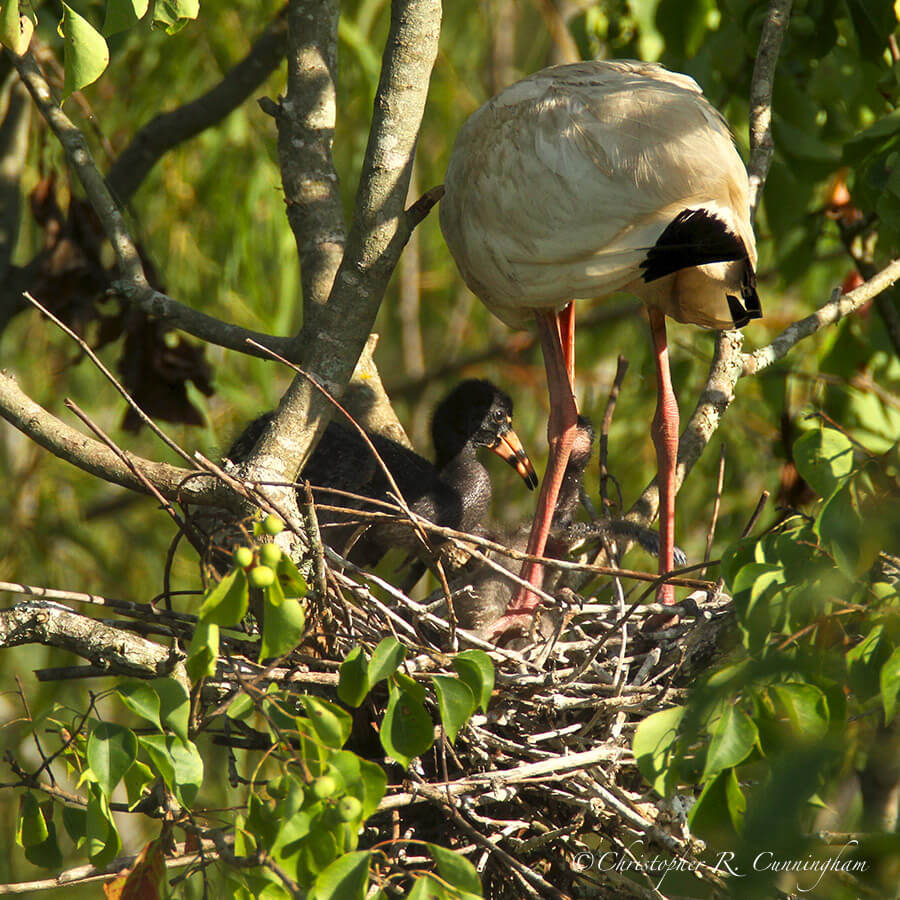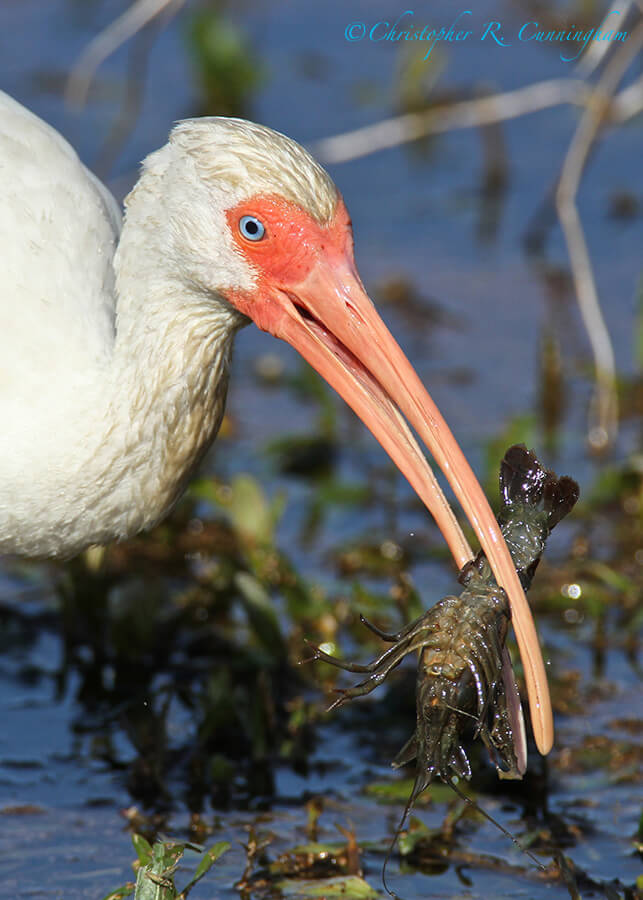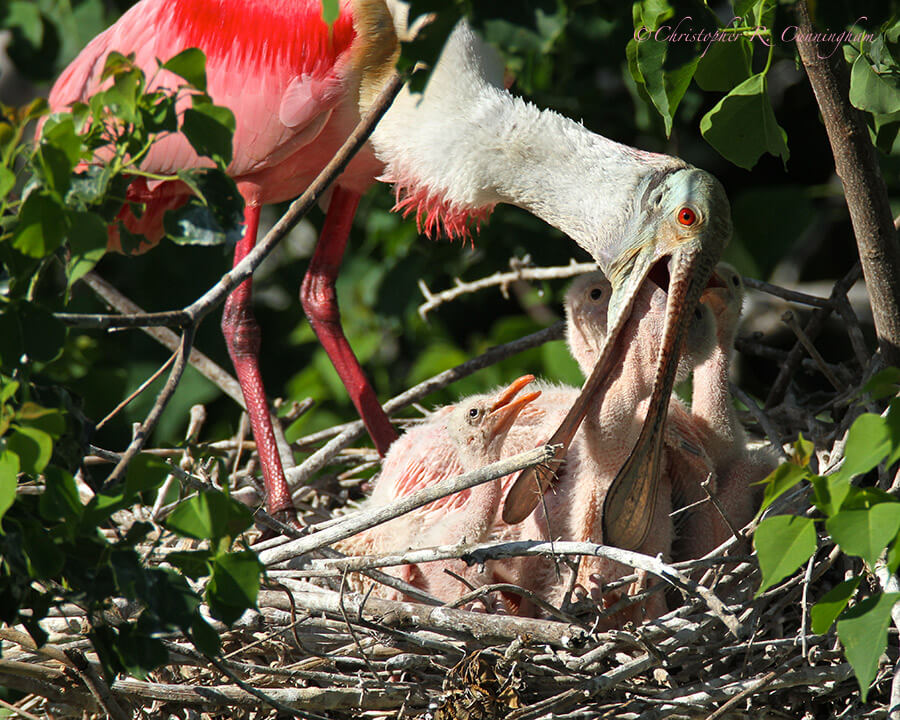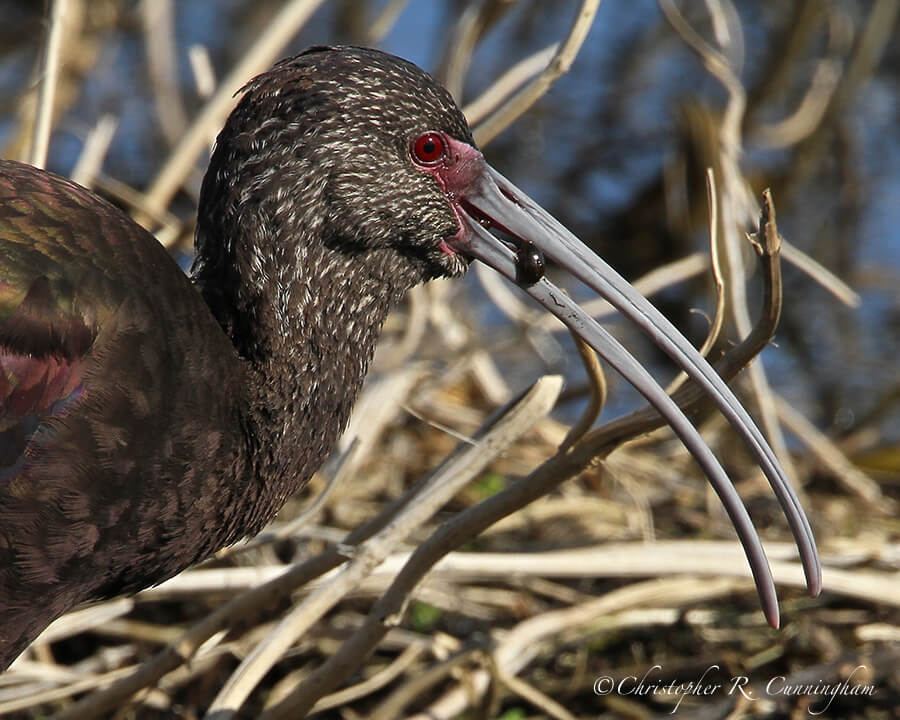He was born when I was six and was, from the outset, a disappointment.―James Hurst, The Scarlet Ibis: The Collection of Wonder

After a photo-birder friend (LM) told me about the White Ibises nesting on the the south edge of Pilant Lake, I recently spent a few hours trying to photograph nestlings. Only one nest can currently be photographed (above), but there are many others back in the swamp—and the air is filled with the weird gurgling noises ibises make.
The one nest that can be seen is still rather difficult to photograph given its distance from the trail and the profusion of vegetation. But I could see that the nest contains two nestlings, one much larger than the other. Likely the smaller chick simply hatched later, the size disparity exacerbated by the bigger chick receiving more than its fair share of food along the way. Such a disparity in nestling size often spells doom for the littlest birds. In this case, though, the little bird is a real fighter and chased mom’s beak around relentlessly hoping for a morsel or two of regurgitated crawfish. I hope it makes it, although the odds may be against.

The long, curved beak of ibises is used to probe into burrows and crevices occupied by a variety of prey. The rapid up-and-down motion of the beak reminds me of a sewing machine. At BBSP, it’s common to see White and White-faced Ibises grabbing a variety of aquatic arthropods including predaceous diving beetles (larval and adult) and crawfish. Frogs and small fish are taken, too, as are the bulbs of some aquatic plants.

Spoonbills and ibises constitute the Family Threskiornithidae, the former being close relatives of the Old World Ibises. I tend to think of spoonbills simply as ibises with a specialized feeding strategy: Typically the bill is waved back and forth through the water to capture prey, vertebrate and invertebrate, which is then flipped up into the air and ingested (below).

We have seen all U.S. species of ibises, including the Scarlet Ibis, an exotic South American and Caribbean native that was introduced into Florida in 1961. We saw this species on Sanibel Island at the J.N. Ding Darling National Wildlife Refuge on the the west coast of Florida about seven years ago. A small group of these birds was walking along the strand line of this famously shelly beach. This sighting, dear reader, was before we were serious photo-birders, so you’ll just have to take my word that it occurred! We hope to return one day and document the behavior of these spectacular, brilliantly-colored Tropical birds.

©2015 Christopher R. Cunningham. All rights reserved. No text or images may be duplicated or distributed without permission.